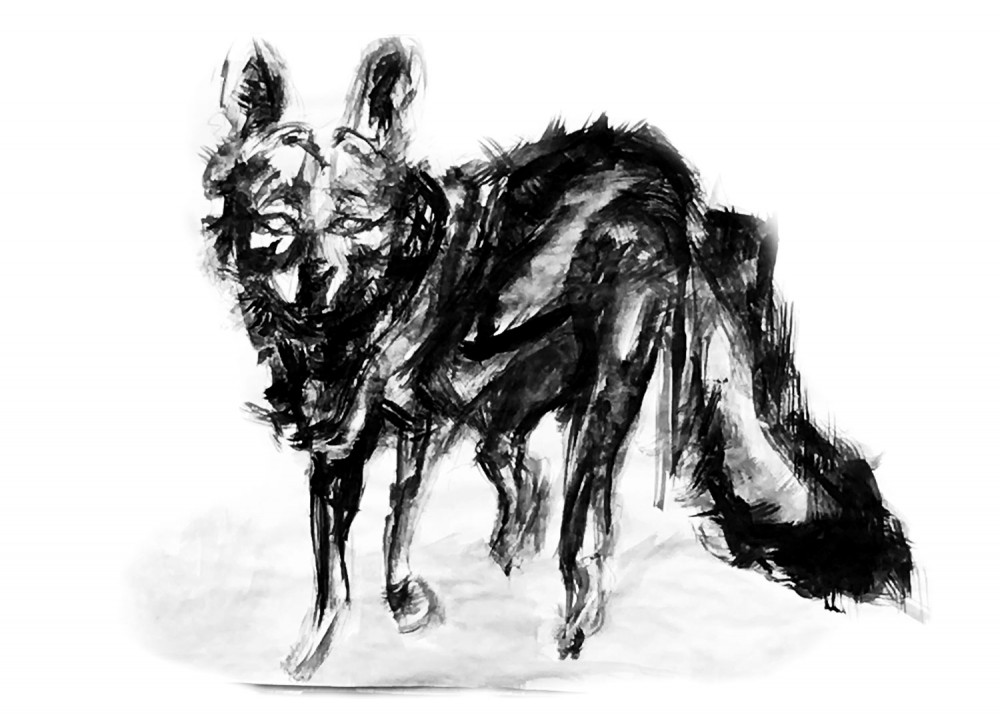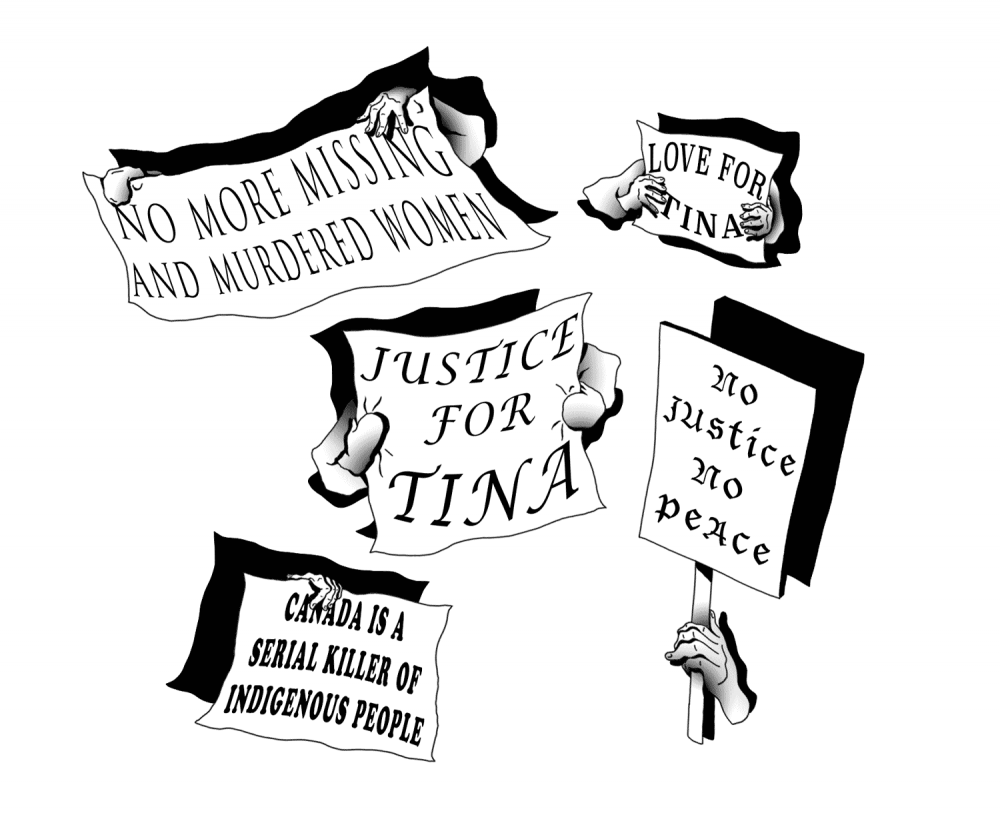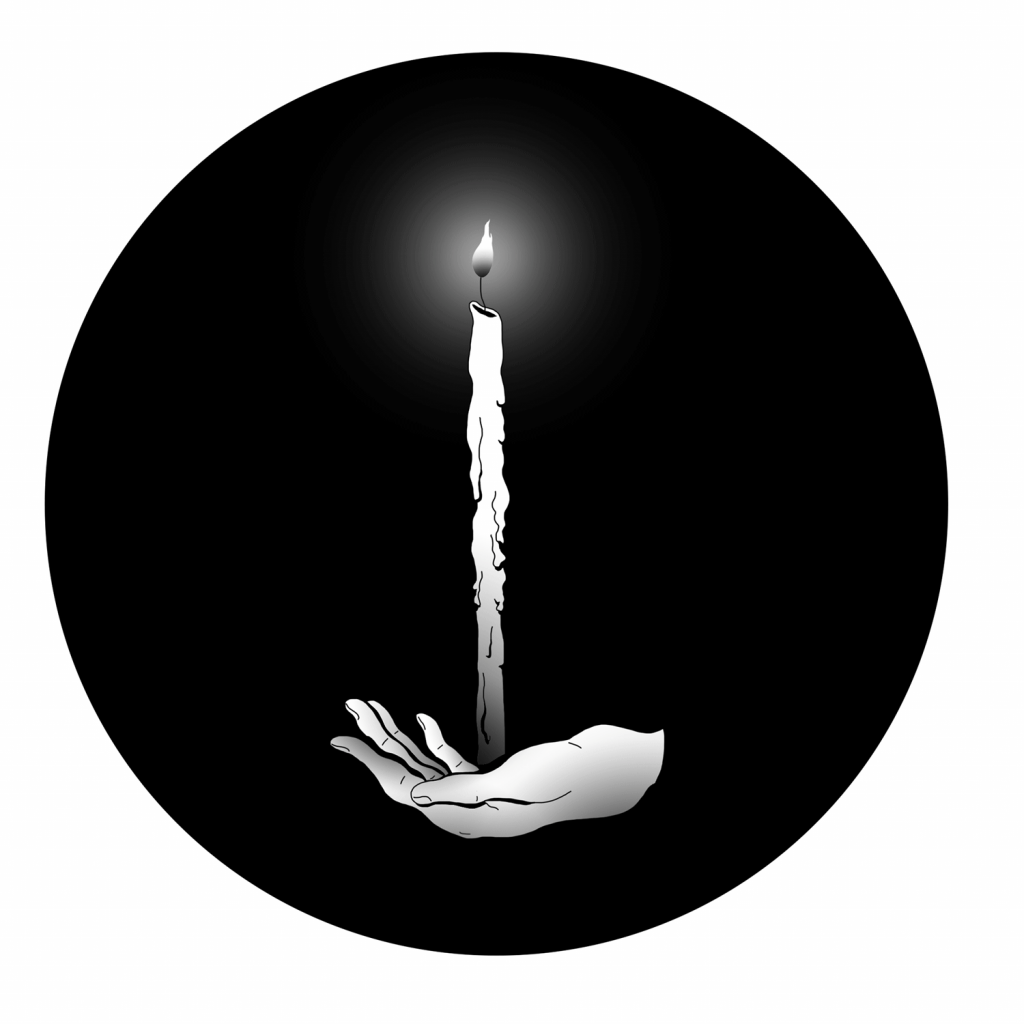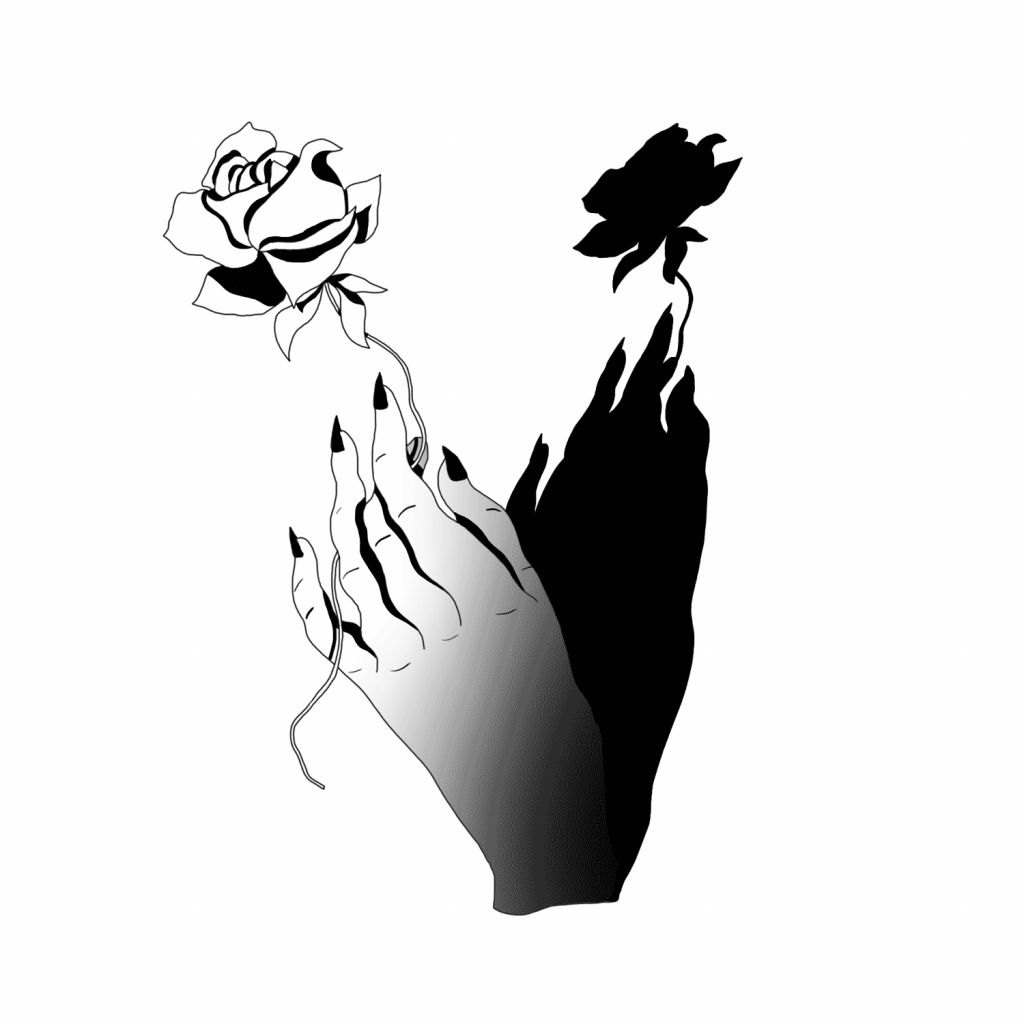In the time before there was light. In the darkness, there were stories. A place where you could be any gender. A place of sexual desire and pleasure. All fantasies went. They played games. They played games in the dimming of the light.
A little light to warm us all. She tends to the light. A flame.
On the floor, to the centre left of the intimate, circular theatre stage, Laakkuluk huddles over a kudlik, slowly bringing its flames to life from left to right. Behind her, Tanya sighs and growls softly and repeatedly, her throat singing gradually building tension and momentum. Over the flickering fire of the kudlik, Laakkuluk tells us of a world of possibility and fantasy — a place where passion is embraced and embodied. Then, from the oil and soot of the kudlik, she smears her face in black, scratches lines across her cheeks and forehead, and puffs her cheeks out with large wooden beads. She transforms. Tanya quickens and intensifies her sound, and together, they invite us into the unknown.
Laakkuluk is performing uaajeerneq, a traditional Greenlandic mask dance and form of storytelling which centres elements of sexuality, fear and hilarity. Transformed, she moves away from the light, stepping forward into the darker foreground of the stage. She begins to move around the space, crawling and lifting her body in every direction. Eyes bright and piercing, she circles the audience, taking us in. She feeds on our curiosity, our awe, our anticipation of what will come next. The energy and feeling in the space sharpens. Tanya rumbles and snarls. Laakkuluk works her way to the back of the stage to join her in an instinctual and fiercely intimate exchange of singing and dance. Exploring and testing their boundaries, they grasp and hold each other with a hunger and intensity that permeates the room. Tanya ducks between Laakkuluk’s legs and howls from beneath the tulle of her dress. Limbs entwined, panting and breathless, the performance climaxes in a visceral entanglement of sound and movement.
Moving away from Tanya, Laakkuluk redirects her focus on the audience. Weaving and creeping her way through the crowd, she peers into the faces of her onlookers. Tanya’s guttural rhythm emboldens her, feeds her, propels her into our space. At times grinning and mischievous, at times erratic, maniacal and terrifying. In Kalaallisut, she whispers and points, as though taunting us. She crawls over chairs, slinks through our ranks, and jumps into the laps of her prey. We are her playthings. We are implicated. Just as much her entertainment as she is ours. Boundaries blur between audience and performance. Face to face, eye to eye, she flips the gaze of the show and the observers become the observed.
The performance is a dialogue. Tanya and Laakkuluk speak to one another through their art — Tanya through her voice and Laakkuluk through the mask dance. Their synergy tantalizes and intrigues, almost intimidates. They relate through an emotive and kinetic language that is both familiar yet otherworldly. In the shared space of the performance, the audience is invited into the dialogue. We become integral to the evolution of the show as they look to us and us to them. In a loop of actions and reactions, the energy emanating from the crowd and the responses of the artists push the performance forward.
As the show nears its end, Laakkuluk exits and reenters the stage. Suddenly, she is visibly afraid. She seems lost and her eyes desperately search the room. She unravels. At no point in the performance is uaajeerneq’s theme of fear more palpable. Panicked and whimpering, she crawls to Tanya. They find each other, centre stage, and embrace in an electric moment of relief and love. Tanya’s dress sparkles as the passion and care of their relationship saturates the room and fills us with light.
Laakkuluk returns to the kudlik. Snuffs its flames one by one. The room dims. Tanya relaxes her breath. They smile and bow to a standing ovation. As the lights come on, we are left to navigate what we have witnessed.
X
Tanya Tagaq and Laakkuluk Williamson Bathory performed at The Chan Centre from March 16-18, 2018 to a fully sold out theatre every night. This column is produced by CiTR 101.9FM’s Indigenous Collective, who also produce Unceded Airwaves on air Wednesdays at 2PM. Visit citr.ca/radio/unceded-airwaves for show archives.





